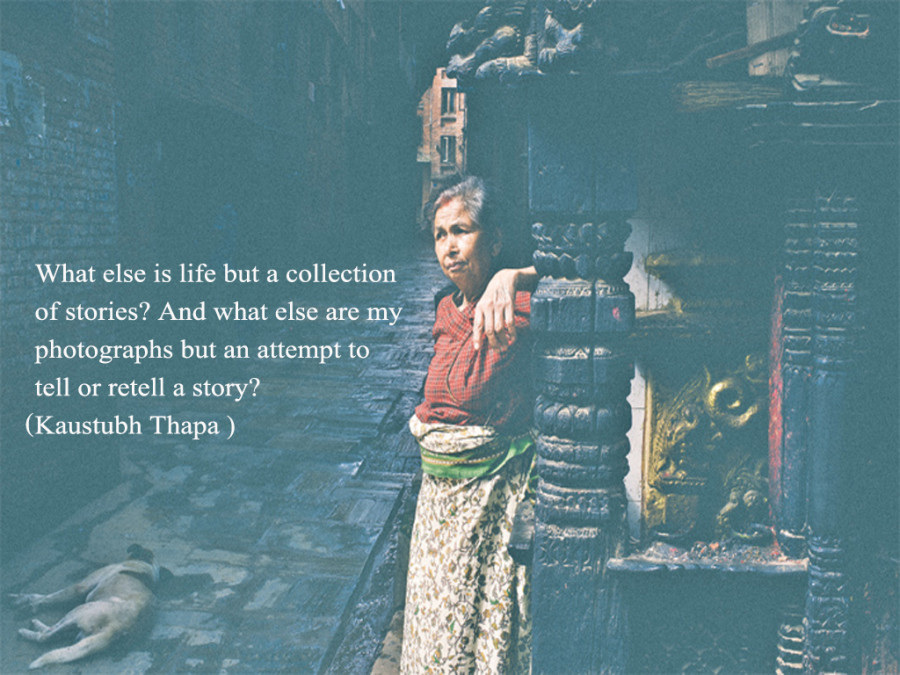Miscellaneous
Stories of the Old
When I photograph, their eyes engage me, their wrinkle lines reflect their experiences if not narrate their stories, and the curve of their lips sets the mood for the picture.
Kaustubh Thapa
Growing up in a joint family, I listened intently to the tales of my grandparents and their friends. It always carried me to another world. I was not exposed to the wonderful world of books until my mid-teens, so these conversations were the primary sources that took me to another dimension—the realm of creativity where everything was possible. While my friends touted their favourite children books or cartoons, which I could not and still cannot relate to, the stories shared by the old became the source of my fantasies early on in life. The places they mentioned in their tales were physically close to me, yet remote. The transformation of culture and landscape within two generations was dramatic; their tales were about blue rivers where my grandfather swam with his friends. They talked about chasing wildlife through thick forests. After these stories, the places would transform in my head, the animals would come out of the forest of the polluted concrete jungle, the rivers would start to grow and kids would jump naked, free and uncaringly into the blue. For a young boy, the elderly were magic carpets that would fly me to this land full of imagination.


My fascination with the old and their stories have persisted. Old people and their stories have become one of my central photographic subjects. I strive for portraitures of the old, in a way trying to relive my childhood. When I photograph, their eyes engage me, their wrinkle lines reflect their experiences if not narrate their stories, and the curve of their lips sets the mood for the picture. If my portrait is environmental, I try the wider setting to reinforce their stories. To hunt for these characters, I tried to make conversation, often and as much as possible, but sometimes it is beyond the practicality limited mostly by time and language barriers.


I am a sucker for stories, in some ways, what else is life but a collection of stories? And what else is my photograph but an attempt to tell or retell a story?

Nepal is one of my favourite places to photograph—most of the time there is no language barrier. I can convince them to talk to me and share with me their stories. It is amazing how far ‘Khaana Khaanu Bhayo’ goes. Once this led to a story of a lady who lives within the Annapurna Conservation area, sustaining from her small tea-shop and even smaller parcel of land. “I never liked men, I don’t need them,” she said. Almost in her late forties, a lot of elderly man, especially widowers, came to woo her. “I didn’t give in when I was pretty like a butterfly to the best men around, why would I now?” she said. She charged me Rs 5, instead of the regular Rs 10, and I remember her fondly but I did not take her picture.


I don’t want them to pose but get lost in their stories, so I actively engage with them in their storytelling and begin taking pictures when they are no longer intimidated by the tool between us. Portrait photographers strive to build rapport relatively quickly–otherwise, photos become mere snapshots.
The process of freezing a moment and transforming them into stories are like kinhin—resembling the meditative walks of the Zen monks. The camera and the lens and it’s price tag are irrelevant at this point, the hereness and nowness is all that matters. You don’t think, thinking is distracting. You take pictures, you don’t gauge their sharpness but their stories. Then, you not only capture the moment but preserve them, so that you can relive them all over again.

For me, it is a personal journey motivated by sheer passion for this transient process. Over the years, I have managed to capture a collection of portraits from all over Nepal. Here I present some of my works, in which I long for the ever familiar stories from my childhood.



Thapa is a freelance photographer currently based in Budapest, Hungary.




 10.12°C Kathmandu
10.12°C Kathmandu










